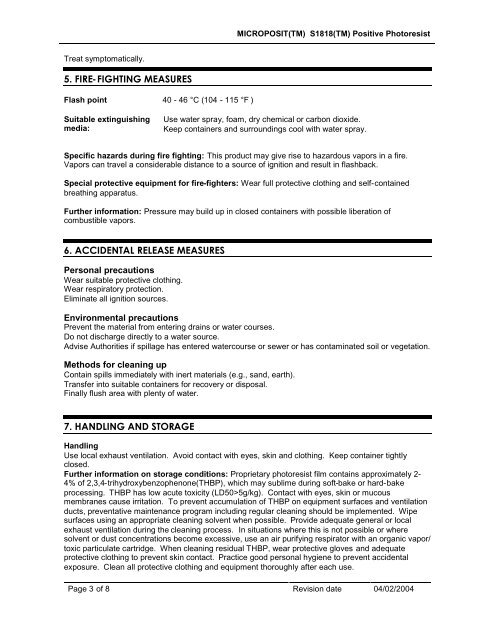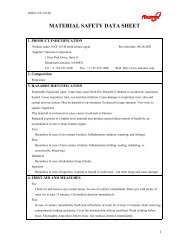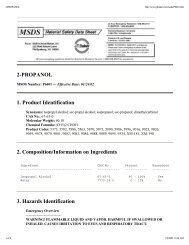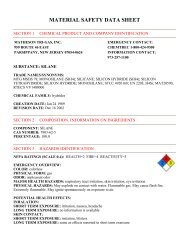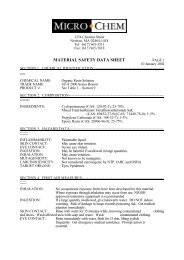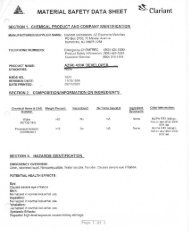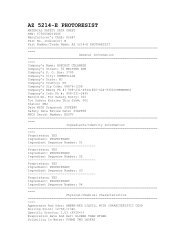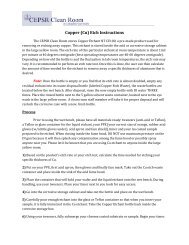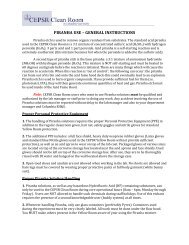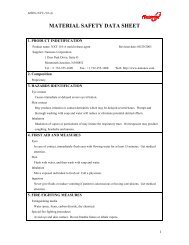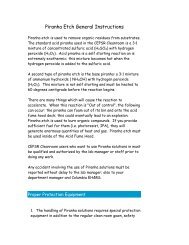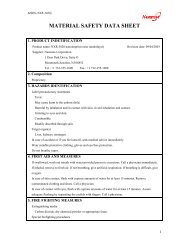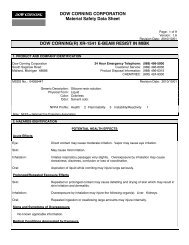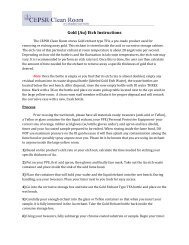Shipley 1818 Photoresist
Shipley 1818 Photoresist
Shipley 1818 Photoresist
- No tags were found...
Create successful ePaper yourself
Turn your PDF publications into a flip-book with our unique Google optimized e-Paper software.
MICROPOSIT(TM) S<strong>1818</strong>(TM) Positive <strong>Photoresist</strong>Treat symptomatically.5. FIRE-FIGHTING MEASURESFlash point 40 - 46 °C (104 - 115 °F )Suitable extinguishingmedia:Use water spray, foam, dry chemical or carbon dioxide.Keep containers and surroundings cool with water spray.Specific hazards during fire fighting: This product may give rise to hazardous vapors in a fire.Vapors can travel a considerable distance to a source of ignition and result in flashback.Special protective equipment for fire-fighters: Wear full protective clothing and self-containedbreathing apparatus.Further information: Pressure may build up in closed containers with possible liberation ofcombustible vapors.6. ACCIDENTAL RELEASE MEASURESPersonal precautionsWear suitable protective clothing.Wear respiratory protection.Eliminate all ignition sources.Environmental precautionsPrevent the material from entering drains or water courses.Do not discharge directly to a water source.Advise Authorities if spillage has entered watercourse or sewer or has contaminated soil or vegetation.Methods for cleaning upContain spills immediately with inert materials (e.g., sand, earth).Transfer into suitable containers for recovery or disposal.Finally flush area with plenty of water.7. HANDLING AND STORAGEHandlingUse local exhaust ventilation. Avoid contact with eyes, skin and clothing. Keep container tightlyclosed.Further information on storage conditions: Proprietary photoresist film contains approximately 2-4% of 2,3,4-trihydroxybenzophenone(THBP), which may sublime during soft-bake or hard-bakeprocessing. THBP has low acute toxicity (LD50>5g/kg). Contact with eyes, skin or mucousmembranes cause irritation. To prevent accumulation of THBP on equipment surfaces and ventilationducts, preventative maintenance program including regular cleaning should be implemented. Wipesurfaces using an appropriate cleaning solvent when possible. Provide adequate general or localexhaust ventilation during the cleaning process. In situations where this is not possible or wheresolvent or dust concentrations become excessive, use an air purifying respirator with an organic vapor/toxic particulate cartridge. When cleaning residual THBP, wear protective gloves and adequateprotective clothing to prevent skin contact. Practice good personal hygiene to prevent accidentalexposure. Clean all protective clothing and equipment thoroughly after each use.Page 3 of 8 Revision date 04/02/2004


